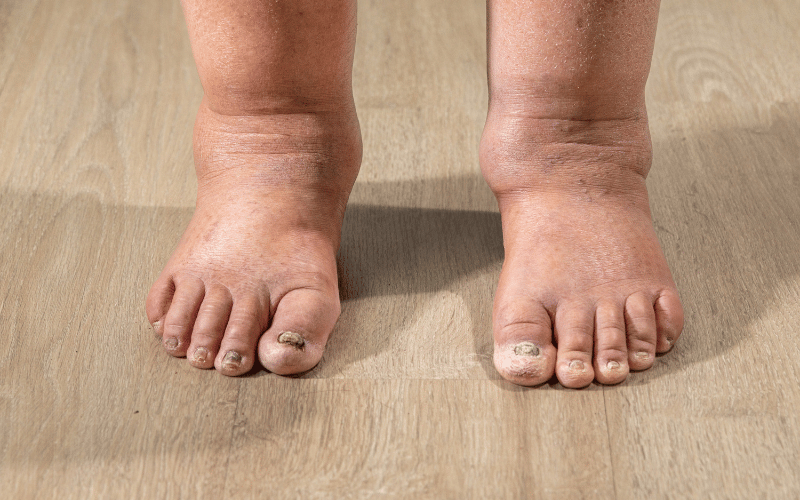7. Swollen Legs and Ankles: The Fluid’s Downward Journey

When the legs and ankles exhibit noticeable swelling, it’s often referred to as peripheral edema. This symptom is not exclusive to cirrhosis but is frequently seen in those with the condition. The accumulation of fluid in these lower extremities can range from mild puffiness to severe swelling, causing discomfort and mobility challenges.
The liver’s diminished ability to produce albumin, vital for retaining fluid within the blood vessels, is a primary cause. As albumin levels drop, fluid seeps into the surrounding tissues. Furthermore, portal hypertension, a consequence of cirrhosis, exacerbates this fluid leakage. Given the body’s anatomy and the influence of gravity, the legs and ankles become the primary reservoirs for this excess fluid.
Beyond the evident physical discomfort, peripheral edema presents other challenges. Prolonged fluid accumulation can strain the skin, leading to itching, pain, and even ulcers in severe cases. Additionally, there’s a risk of infections if the skin breaks. The swollen extremities can also impede daily activities, making walking or standing for extended periods challenging.
While elevating the legs and using compression garments can offer temporary relief, it’s essential to address the underlying liver dysfunction. Diuretic medications, which increase urine output, might be prescribed to reduce the swelling. Dietary changes, especially reducing salt intake, can also be beneficial. Regular medical evaluations are crucial to adjust treatments as the condition evolves. (7)